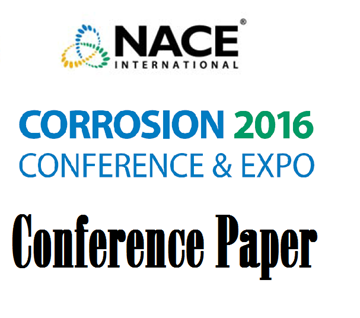According to a survey of corrosion releases in hazardous liquids pipelines, of the 52 internal corrosion releases reported in 2009-2012, 31 occurred in intermittently operated lines. Pigging operations cannot be performed in many of these pipelines for a number of reasons, such as limitations imposed by pipeline design features, pigging cost, risk of the pig getting stuck in solids or sludge accumulated in front of it. For unpiggable pipelines, direct assessment using the liquid petroleum internal corrosion direct assessment (LP-ICDA) method is a widespread industry practice that helps operators detect pipeline sections damaged by internal corrosion. The models and correlations referenced in the standard are for steady-state, oil-water flow or liquid-solids flow, however the flow of transported fluids is transient (unsteady) in intermittently-operated, crude-oil pipelines. Furthermore, the critical inclination angle defined in the standard is applicable to a pipeline having a piecewise elevation profile. Nevertheless, the local slope of the pipeline changes continuously along its entire length because the local slope of an elevation profile of the landscape or seabed changes continuously in most cases. In this paper, a pipeline diagnostic survey using transient, ultra-high definition simulations of three-phase oil-water-solids flow is performed to identify ICDA regions and develop solutions to extend the useful life of a 48-in. diameter pipeline transporting crude oil from an onshore tank farm to a Single Point Mooring/Pipeline End Manifold (SPM/PLEM) system. Transient free water and solids holdup profiles along the pipeline during loading operations and shutdown periods were predicted based on historical cargo data (including detailed loading plans and loading rates), basic sediments and water (BS&W) data, the rate of conversion of emulsified water into free water caused by the residual concentration of demulsifier in crude oil, solids properties, and tanker loading schedules. It was found that significant accumulations of free water and solids occurred only in a few sections of the offshore portion of the pipeline. This was attributed to the fact that in each loading operation the cargo officer requests the terminal to reduce the loading rate and adjust it until the final cargo transfer quantity is reached. As a result, during this time the pipeline is operated at a low flow condition at which free water ceases to enter PLEM, while it is still displaced from the onshore portion into the offshore portion of the pipeline. Two solutions were proposed to prevent microbiologically influenced corrosion (MIC) and extend the useful life of the pipeline. The first solution is based on the optimization of the loading plan to minimize the volume of free water accumulated in the offshore portion on completion of cargo transfer. In the second solution, a system generating batches of drained water taken from the storage tanks is connected to the pipeline inlet. A biocide is injected into the water batches. The concentration of the biocide and speed to kill are selected based on the water batch residence time determined using the transient flow simulations. The number of water batches to be launched depends on the volume and properties of solids that can enter the pipeline.
Product Number:
51320-14673-SG
Author:
Yuri Fairuzov, Victor Fairuzov
Publication Date:
2020




